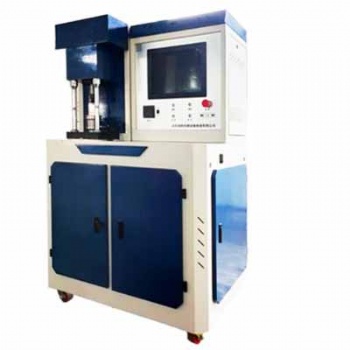News
Charpy Impact Test Cooling Low-Temperature Chamber: Essential for Accurate Testing
Charpy Impact Test Cooling Low-Temperature Chamber: Essential for Accurate Testing
Low-temperature impact testing is a critical part of material evaluation, especially for materials expected to perform under extreme cold conditions. The Charpy Impact Test Cooling Low-Temperature Chamber plays a vital role in these tests, ensuring the specimens are brought to and maintained at the required temperature before testing.
This article delves into the features, working principles, and benefits of using low-temperature chambers for Charpy impact testing.
What is a Charpy Impact Test Cooling Low-Temperature Chamber?
The cooling chamber is a specialized piece of equipment designed to condition test specimens to specific sub-zero temperatures, as required by standards such as:
ASTM E23
ISO 148-1
GB/T 229
It ensures that the material behaves as it would in real-world low-temperature environments, allowing accurate evaluation of its toughness and brittleness.
Key Features of the Cooling Chamber
Precise Temperature Control:
Capable of achieving temperatures as low as -80°C or lower.
Digital controllers ensure high accuracy, with deviations as low as ±0.5°C.
Rapid Cooling:
Efficient cooling systems, often using liquid nitrogen or mechanical refrigeration, minimize preparation time.
Spacious Interior:
Designed to accommodate multiple specimens, improving testing efficiency.
Safety Features:
Insulated designs to prevent frost formation.
Automatic alarms for temperature deviations.
Compliance with Test Standards:
Ensures that specimens are maintained at the specified temperature for the required duration before testing.
Applications of the Low-Temperature Chamber
Metals and Alloys:
Assessing the toughness of steel and other metals used in cold environments like pipelines and bridges.
Polymers and Composites:
Understanding material behavior for arctic applications.
Research and Development:
Innovating materials for aerospace, automotive, and cryogenic systems.
Quality Control:
Ensuring product consistency and adherence to safety standards.
Working Principle
Preconditioning the Specimen:
Place the test specimens inside the cooling chamber.
Set the desired temperature according to the test standard.
Temperature Monitoring:
The system continuously monitors and adjusts the internal environment to maintain stability.
Test Preparation:
After reaching the required temperature, transfer the specimen quickly to the Charpy impact tester and conduct the test.
Repeatability:
The chamber ensures uniform cooling for multiple specimens, maintaining consistent test conditions.
Why Choose a Low-Temperature Chamber for Charpy Testing?
Enhanced Test Accuracy:
Precise cooling ensures the specimen mimics real-world conditions.
Standard Compliance:
Meets strict temperature requirements outlined in major global standards.
Durability:
Robust designs withstand repeated cycles, ensuring long-term reliability.
Ease of Use:
Intuitive controls and automated functions simplify operations.
Conclusion
The Charpy Impact Test Cooling Low-Temperature Chamber is indispensable for industries requiring reliable low-temperature material testing. It ensures precise control, standard compliance, and efficient workflows, making it a valuable investment for laboratories and production facilities alike.
For more information on low-temperature chambers and Charpy testing equipment, please feel free to contact.
Get in touch to find the perfect solution for your material testing needs today!
JBD 500J 60 degree computer control impact tester, 10KN tensile pull testing apparatus, 100KN tension testing system, 100KN tensile stress tester
Categories
Contact Us
- +86-18615632092
- wtbequipment@hotmail.com
- sophie-tester
- +86-18615632092




 售前客服
售前客服